Landscape as a field of memory and culture
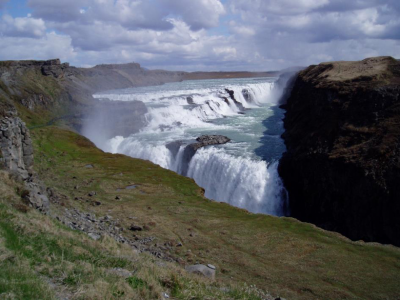 Europe does not have wild and dangerous ecosystems. European landscapes are primarily man-made. Therefore, Europe can be seen as one big garden. Landscape is the ever-changing result of both land use management and natural processes. By focusing on the cultural practices that shaped landscapes, emphasis is placed on its social memory assets and on the attractiveness of landscapes for tourism. Under the influence of Europe and UNESCO some landscapes have become more worthy of preservation than others. These landscapes have become heritage and are referred to as cultural landscapes.
Europe does not have wild and dangerous ecosystems. European landscapes are primarily man-made. Therefore, Europe can be seen as one big garden. Landscape is the ever-changing result of both land use management and natural processes. By focusing on the cultural practices that shaped landscapes, emphasis is placed on its social memory assets and on the attractiveness of landscapes for tourism. Under the influence of Europe and UNESCO some landscapes have become more worthy of preservation than others. These landscapes have become heritage and are referred to as cultural landscapes.
Landscape as a collective memory of the culture of past generations
Landscapes can become very famous, loaded with history and full of drama. One only has to think of the Lake District in the UK, the Alps in Switzerland and the Tuscany region in Italy to acknowledge its full potential as a source of history and belonging. Even industrial places like the German Ruhr Gebiet have been reshaped and redesigned into heritage and leisure landscapes. The heritage assets of such landscapes have been fully used by the tourist industry. Landscapes therefore should be treated with great care. Increasingly landscapes are acknowledged as the cultural memory and social capital of nations and regions. If for instance we look at the agrarian history in Europe and focus on the so-called transhumance, one still can find the small stony summer houses of the shepherds in the higher mountainous regions, the villages where the shepherd families and sheep herds would live in winter, and the roads connecting these villages together. The material remains of a way of life once widespread over Europe and now extinct, are fossilized in the landscape. These transhumance landscapes serve as a knowledge reservoir of European civilization. They function as a collective memory.
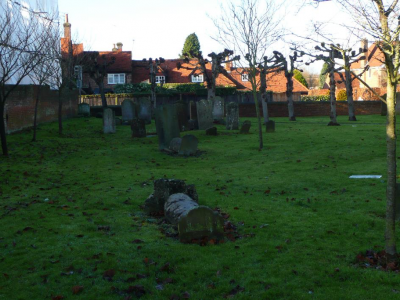
Landscape as memoryThe European Commission is fully aware of the heritage assets of landscapes and adopted the landscape convention as a framework of protection, coherent planning and management. It states that “As a reflection of European identity and diversity, the landscape is our living natural and cultural heritage, be it ordinary or outstanding, urban or rural, on land or in water” (https://www.coe.int/en/web/landscape).
Analysis of heritagization
The very first time that people started to see its environment as a landscape was in Roman times. In the first century before Christ, Vitruvius, a Roman architect, started to write about landscape. He wrote that the very picture of a landscape can distract man’s attention from his daily problems. This perception could only be made by a person who is not totally dependent on a farmers use of the landscape. He believed that pictures of a landscape as part of the decoration of a home brings relaxation. The concept of landscape was used in the 7th century, in legal documents. Here landscape refers to the regal rights of hunting of the noblemen. It could also refer to the common property of a community. In the 15th century, when Europeans developed ideas on the intrinsic value of nature, the concept became more comprehensive. It referred to the characteristics of a region.
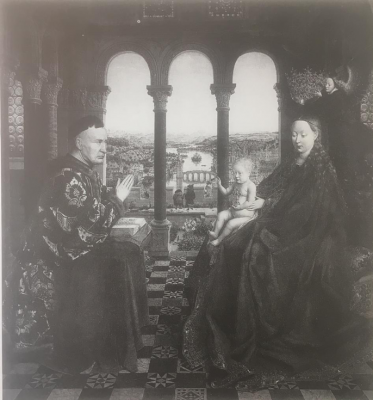
A 15th century painting by Van Eyck, Madonna with a scenic landscape in the backgroundThis however does not imply the recognition of landscape as an asset of cultural heritage. First, landscape painting had to become popular, and travellers had to write extensive books on what landscapes they crossed. One famous example of landscape painter is Pieter Bruegel, who lived in the Dutch province Brabant in the 15th century. He made a journey to Italy and made numerous sketches of the landscapes he crossed. The way we nowadays conceptualize landscapes is heavily influenced by these early-modern painters and travellers. A famous example of a traveller is Goethe, who described his 18th century journey, also to Italy, in great detail. Also Alexander Von Humboldt (1769-1859), who explored the “savage” parts of the world, organised his observations by using the landscape concept, so to write in a consistent way about an unknown and unfamiliar world. He used landscape in a scientific way when he described it as the “Totalcharakter einer Erdgegend” (the integrative character of a distinct piece of the earth).
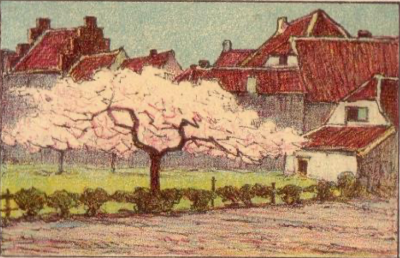
A romantic view of a rural landscape of belongingDespite the fact that landscapes as a concept became widely used, the first signs of heritagization of landscapes is the result of the industrial revolution and the mechanization of agriculture. Dramatic and swift changes in the landscape showed the inhabitants of the western world that modernization took place, at the cost of traditions. For many writers and artists traditions were reflected in the landscape. In the early 19th century, romantic poets such as Byron and Wordsworth started to write about the beauty of the natural landscapes. Wordsworth for instance already in 1910 described the English Lake District as a national property in which every man has a right to enjoy its landscape. The focus on landscapes in Romanticism may be seen as the first stage of heritagization. At the end of the 19th century in western European countries like England, France and Germany new attention was given to the Romantic idea of landscape as a place of belonging and happiness. Owners of big estates in the countryside assigned landscape architects to turn their property in a pallet of nicely appearing natural landscapes. The first serious attempts to establish landscape reserves, such as National Landscapes, can be found in the 19th century. In America in the 1860 the idea of a national park was proposed, which lead to the creation of national parks like Yellowstone. Landscapes became icons of a nation or a region, which was hugely valorized by landscape photography. In the Netherlands for instance, serious attempts were made in the very beginning of the 20th century to proclaim the southern part of Limburg as a National Landscape. This creation of national landscapes may see as the second phase of heritagization of landscapes. The third phase on landscape heritagization results from the rise of mass tourism.
The study and management of landscape
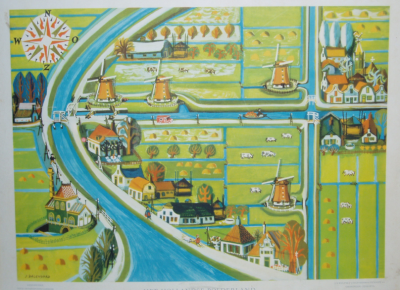
An iconic picture of the Dutch polder landscape, famous for its altitude far under sea levelBefore it became heritage, landscape was just a concept used by geographers to account for the specific consistent features of a certain area (Jordan, 1973). The functionality of the landscape was their primary interest. The French geographers tried to describe all the peculiarities of region that could account for its health and for the wellbeing of its inhabitants. The understanding of landscape changed when philosophers considered it as a fundamental relation between mankind and nature (Schmithüsen, 1968). Landscapes have mostly been studied in a phenomenological tradition, in which landscape perceptions are related to specificities of the observer. The study of landscape perceptions, from the perspective of environmental psychology in the Koffka (1935) tradition, focuses on the interaction of the inner and outer world of an observer with Gestalt psychology. Additionally, it has been hypothesized that our understanding of landscape is primarily based on the knowledge of our own body (Merleau-Ponty, 1962). Landscape became heritage after it became to be seen by geographers as the product of culture (Jordan, 1973). Looking at landscape history from a cultural perspective, scientist discovered the value of landscape as a vital part of the social memory of a community (Rackham, 1986). This contributed significantly to the idea of landscape as cultural heritage.
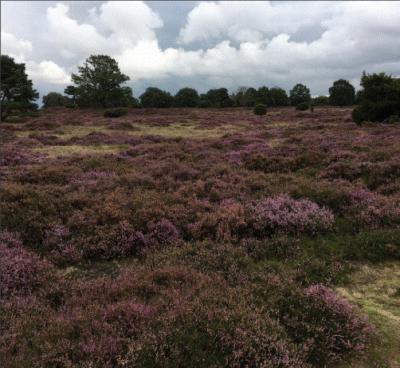
What seems to be a nice natural landscape in fact is a product of a sheep breeding cultureThe cultural understanding of landscape and how this affects legal definitions and provisions varies widely across the European Union. For example, landscape in the Netherlands is mostly considered to be the space outside cities, whereas in Scandinavia landscape is considered to be the space outside the woodlands. So, in a project that brought the two countries together, when the Dutch presented plans to change agricultural landscape into woodland, the Scandinavian’s considered this a violation of the rules of the project. It took them almost a year to understand the conflict. The project needed a better understanding of the relation of language and landscape, or maybe even as landscape as language. The relation between landscape and language is indeed becoming a fundamental issue to study landscape (see for example Bulkens, 2014).
European cultural landscapes
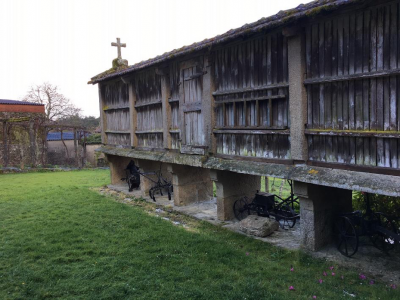
An empty and idle granary as a testimony of historic agriculture in the Galician landscapeRecently, under the influence of the European Landscape Convention, the cultural dimension of landscapes gained importance. Landscape is now seen as the interplay of natural environments and situational agricultural practices that are the product of a local culture. It is that same agriculture that represents landscape’s major threat nowadays: globalisation as a process of washing out of its local characteristics. After WW2, European agricultural policies were infused by the adagium “never hungry again”, which led to an unprecedented upscaling of production. This agricultural scaling, combined with urban sprawl, caused a process of de-characterisation of landscapes. Responding to these changes landscape increasingly was perceived as a legacy, to be maintained and taken good care of (Lowenthal, 1985; Kerkstra et al, 2003). Nora (1989) introduced the concept Lieux de Mémoire (opposite to Milieu de Mémoire) to highlight the loss of living traditions, as a consequence of embracing the ideology of societal progress. Inevitably landscape became an object of management and planning, grounded in practices and theories of landscape architecture. If well designed, a living cultural landscape was considered to be able to harmonize modernisation and collective identity (Kerkstra et al, 2003). Landscapes heritagization however may run at odds with planning practices, which sees them as living structures that should not become frozen in time as a result of policies. This can be observed in the book Europe’s Living Landscapes, made by the advocates of the European Landscape Convention (Pedroli et al, 2007). When we see landscape as the result of a culture in specific geographical conditions, it’s only natural that they should adapt to new cultures and change over time. At European level and also by UNESCO a distinction is being made between landscapes and cultural landscapes. According to UNESCO the cultural landscape shows both the work of nature and humankind, expressing a long and intimate relationship between peoples and their natural environment. The landscapes in general may change over time and adapt to further industrialisation of agriculture whereas cultural landscapes are becoming mass tourism destinations, whether or not with a UNESCO label or a European Heritage Label, that must keep their traditional features, no matter if the authenticity is staged or real. It’s the cultural landscapes that are obviously subdue to a further process of heritagization. Landscapes in general may and will change over time, obliviating the history of the people who once lived there.
Roel During
Bibliography
Bloemers, Tom (J. H. F.), Henk Kars, Arnold van der Valk & Mies Wijnen, eds. 2010. The cultural landscape & heritage paradox : protection and development of the Dutch archaeological-historical landscape and its European dimension. Amsterdam, University Press.
Bulkens, Maartje. ‘Storied Landscapes’. Narrating Dutch cultural landscapes. Dissertation WageningenUR.
Jordan, Terry G., 1973. The European Culture Area. A Systematic Geography. Harper & Row Publishers.
Kerstra, Klaas & Meto Vroom, David Lowenthal, Sven Ingvar Andersson, Dusan Ogrin, Michael Hough, 2013. The Landscape of Symbols. Wageningen, Blauwdruk Publishers.
Koffka, K., 1935. Principles of Gestalt psychology. Routledge, London.
Lowenthal, David, 1985. The past is a foreign country. Cambridge, Cambridge University Press.
Merleau-Ponti, Maurice, 1962. Phenomenology of perception. Routledge Classics, Volume 85, London.
Moore, Niamh & Yvonne Whelan, 2007. Heritage, memory and the politics of identity: new perspectives on the cultural landscape. Aldershot England; Burlington, VT: Ashgate.
Nora, Pierre, 1989. Between memory and history: les lieux de mémoire. Representations 26: 7-25.
Palang, Hannes & Gary Fry 2013. Landscape Interfaces: Cultural Heritage in Changing Landscapes. Dordrecht: Kluwer.
Pedroli Bas & Anne van Doorn, Geert de Blust, Maria Louisa Paracchini, Dirk Wasscher, Freda Bunce (eds), 2007. Europe’s Living Landscapes. Essays exploring our identity in the countryside. KNNV Publishing, Zeist, 432pp.
Printsmann, Anu, Alexandra Kruse & Michael Roth 2012. « Introduction for living in agricultural landscapes: practice, heritage and identity. » European Countryside 4 (2), pp. 89-100.
Rackham, Oliver (1986). The History of the Countryside: The full fascinating story of Britain’s landscape. London: J.M. Dent & Sons Ltd.
Scazzosi, Lionella 2004. « Reading and assessing the landscape as cultural and historical heritage. » Landscape Research 29 (4), pp. 335-355.
Schmithüsen, J., 1968. Begriff und Inhaltsbestimmung der Landschaft als Forschungsobject vom geographischen und biologischen Standpunkt. Archiv für Naturschutz und Landschaftsforschung 8: 101-170.

 Université Jean Monnet
Université Jean Monnet